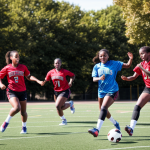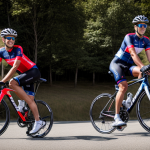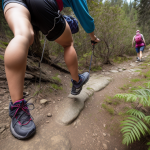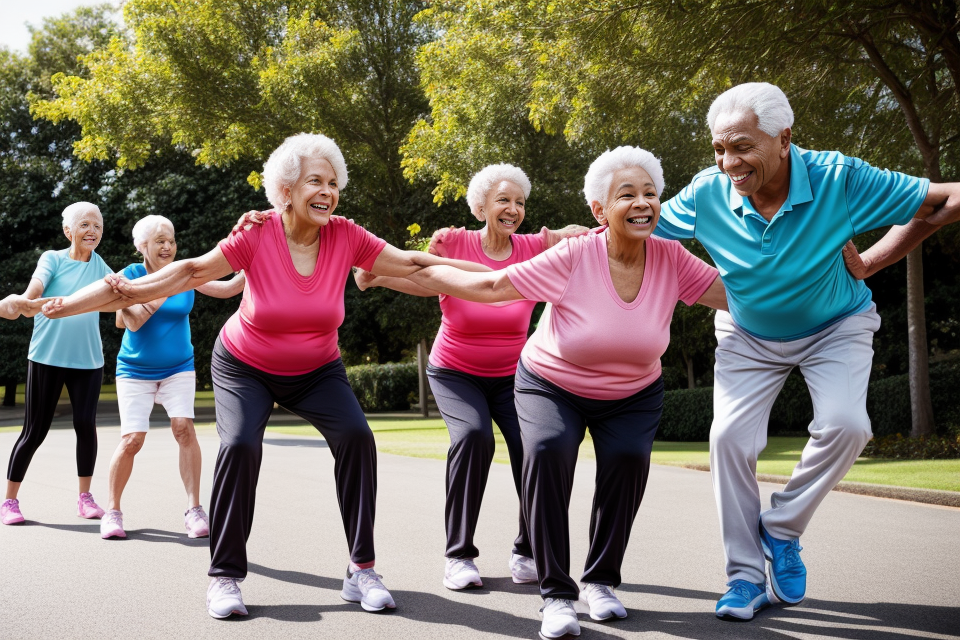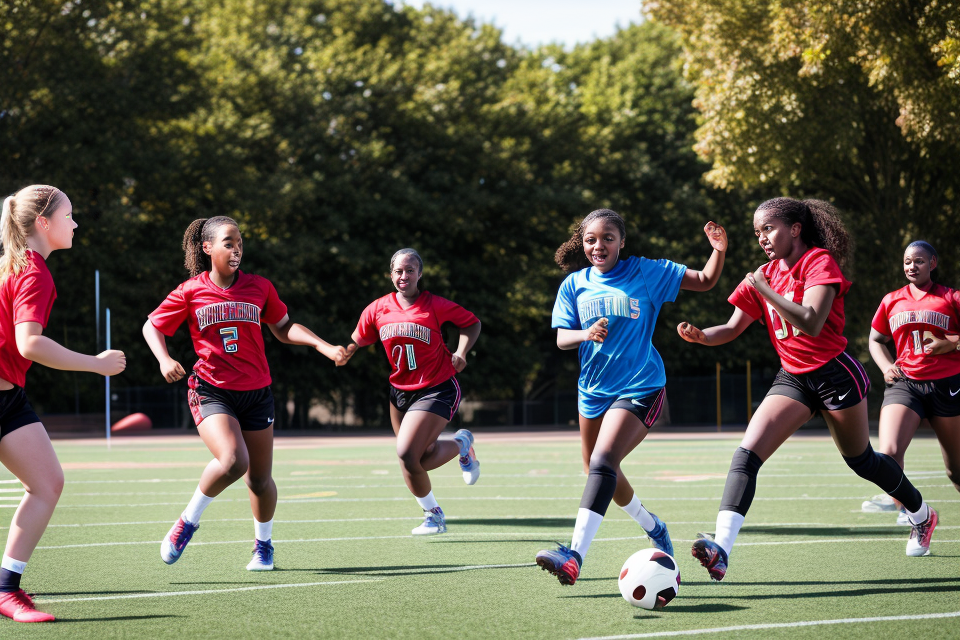As we age, it becomes increasingly important to maintain an active lifestyle to stay healthy and independent. However, many older adults may be unsure about the types and amounts of physical activity that are appropriate for them. To address this, the Physical Activity Guidelines for Older Adults provide clear and concise recommendations for maintaining physical activity and improving overall health. This guide provides a comprehensive overview of these guidelines, including the types and amounts of activity recommended, as well as the benefits of staying active. Whether you’re a seasoned athlete or just starting out, this guide has something for everyone. So let’s get started and explore the benefits of physical activity for older adults!
What are Physical Activity Guidelines for Older Adults?
Why are Physical Activity Guidelines Important for Older Adults?
As individuals age, their bodies undergo various changes that can impact their physical and mental health. One of the most effective ways to maintain overall health and well-being is through regular physical activity. Physical activity guidelines for older adults provide a framework for promoting healthy aging and reducing the risk of chronic diseases and disabilities. In this section, we will explore the reasons why physical activity guidelines are important for older adults.
- Maintaining Physical Function: Regular physical activity can help older adults maintain their physical function, including strength, flexibility, balance, and endurance. This can reduce the risk of falls, disability, and chronic conditions such as heart disease, diabetes, and osteoporosis.
- Promoting Mental Health: Physical activity has been shown to have positive effects on mental health, including reducing stress, anxiety, and depression. It can also improve cognitive function and delay age-related declines in cognitive abilities.
- Enhancing Quality of Life: Physical activity can improve overall quality of life for older adults by promoting social interaction, enhancing self-esteem, and improving overall physical and mental well-being.
- Preventing Chronic Diseases: Regular physical activity can help prevent chronic diseases such as heart disease, stroke, and diabetes. It can also help manage existing chronic conditions such as arthritis, high blood pressure, and high cholesterol.
- Supporting Healthy Aging: Physical activity is an essential component of healthy aging. It can help older adults maintain their independence, reduce the risk of disability, and enhance their overall quality of life.
Overall, physical activity guidelines for older adults are important because they provide a roadmap for maintaining physical and mental health, preventing chronic diseases, and supporting healthy aging. By incorporating regular physical activity into their daily routine, older adults can reap numerous benefits and enjoy a higher quality of life.
Benefits of Exercise for Older Adults
Regular physical activity is essential for older adults to maintain their physical and mental health. Exercise can help improve physical function, reduce the risk of chronic diseases, and enhance cognitive function in older adults.
Some of the benefits of exercise for older adults include:
- Improved cardiovascular health: Regular physical activity can help improve cardiovascular health by reducing blood pressure, increasing HDL cholesterol levels, and lowering the risk of heart disease.
- Enhanced bone health: Exercise can help maintain bone density and reduce the risk of osteoporosis in older adults.
- Improved muscle mass and strength: Resistance training exercises such as weightlifting, resistance bands, and bodyweight exercises can help older adults maintain muscle mass and strength, which is essential for maintaining mobility and independence.
- Better balance and flexibility: Exercise can help improve balance and flexibility, reducing the risk of falls and injuries in older adults.
- Enhanced cognitive function: Physical activity has been shown to improve cognitive function in older adults, including memory, attention, and processing speed.
- Reduced risk of chronic diseases: Regular physical activity can help reduce the risk of chronic diseases such as diabetes, cancer, and stroke in older adults.
- Improved mental health: Exercise has been shown to have a positive effect on mental health, reducing symptoms of depression and anxiety in older adults.
Overall, regular physical activity is essential for maintaining physical and mental health in older adults. The benefits of exercise are numerous, and older adults should aim to incorporate physical activity into their daily routine.
How Much Physical Activity do Older Adults Need?
Recommended Amount of Physical Activity for Older Adults
The Physical Activity Guidelines for Americans recommend that older adults engage in at least 150 minutes of moderate-intensity aerobic activity or 75 minutes of vigorous-intensity aerobic activity per week, along with muscle-strengthening activities on two or more days per week. These guidelines are based on a comprehensive review of the scientific literature and are designed to promote the health and well-being of older adults.
Older adults who are not able to meet these guidelines should still try to engage in as much physical activity as they are able, as any amount of physical activity is better than none. In addition, older adults should also aim to reduce the time they spend sitting or lying down, as sedentary behavior has been linked to a number of negative health outcomes.
It is important to note that the recommended amount of physical activity may vary depending on an individual’s age, health status, and abilities. Older adults with chronic health conditions or disabilities may require modifications to their physical activity regimen in order to safely and effectively meet their health goals. As such, it is always advisable for older adults to consult with their healthcare provider before starting a new physical activity program.
Factors to Consider When Determining Physical Activity
As we age, our bodies change and so does our physical activity needs. Therefore, it is important to consider several factors when determining the appropriate amount of physical activity for older adults.
- Age: The older we get, the more important it is to be physically active. Physical activity can help maintain independence, reduce the risk of chronic diseases, and improve overall health.
- Health Status: An individual’s health status is a critical factor to consider when determining physical activity levels. Older adults with chronic health conditions, such as heart disease, diabetes, or arthritis, may need to modify their physical activity to suit their specific needs. It is always best to consult with a healthcare provider before starting a new exercise program.
- Fitness Level: The level of physical fitness is also an important factor to consider. Older adults who are not used to being physically active may need to start slowly and gradually increase their activity levels over time.
- Ability and Mobility: Older adults with mobility issues, such as those who use a wheelchair or have difficulty walking, may need to focus on exercises that can be done while seated or in a chair. It is important to find activities that are accessible and safe for everyone.
- Environmental Factors: The environment in which older adults live can also impact their physical activity levels. For example, older adults who live in a community with limited access to sidewalks or public transportation may have fewer opportunities for physical activity.
Overall, the appropriate amount of physical activity for older adults will vary depending on their individual circumstances. It is important to consult with a healthcare provider and to find activities that are enjoyable and accessible.
Types of Physical Activity for Older Adults
Aerobic Activity
Aerobic activity is a type of physical activity that is designed to improve cardiovascular health and increase endurance. It involves continuous movement of the body’s large muscle groups and is characterized by a rapid heart rate and increased breathing. Aerobic activity is an important component of any exercise program for older adults, as it helps to maintain physical function, reduce the risk of chronic diseases, and improve overall health and well-being.
There are many different types of aerobic activities that older adults can participate in, including walking, jogging, cycling, swimming, and dancing. These activities can be done individually or in groups, and can be modified to suit different fitness levels and abilities. It is recommended that older adults engage in at least 150 minutes of moderate-intensity aerobic activity per week, or 75 minutes of vigorous-intensity aerobic activity per week.
In addition to the physical benefits, aerobic activity has also been shown to have mental health benefits for older adults. It can help to reduce stress, anxiety, and depression, and can improve cognitive function and mood.
It is important for older adults to consult with their healthcare provider before starting any new exercise program, including aerobic activity. They can provide guidance on the appropriate level and type of activity for their individual needs and abilities, and can help to identify any potential health concerns or limitations. Additionally, it is important to gradually increase activity levels over time to reduce the risk of injury and to ensure that the body has time to adapt to the new physical demands.
Strength Training
As we age, maintaining muscle mass and strength becomes increasingly important for overall health and well-being. Strength training is a type of physical activity that involves resistance exercises, such as lifting weights or using resistance bands, to build muscle strength and endurance. It is recommended that older adults engage in strength training exercises at least two times per week, with each session lasting around 30-60 minutes.
Resistance exercises can be tailored to individual fitness levels and goals, and can be performed using a variety of equipment, including free weights, weight machines, resistance bands, and bodyweight exercises. It is important to start with lighter weights and gradually increase the resistance as strength and endurance improve.
Strength training has numerous benefits for older adults, including increased muscle mass and strength, improved bone density, reduced risk of falls and fractures, improved balance and mobility, and increased metabolism and weight management. Additionally, strength training can improve overall mood and quality of life, reducing symptoms of depression and anxiety and promoting a sense of accomplishment and self-confidence.
It is important to consult with a healthcare provider before starting any new exercise program, particularly for older adults who may have underlying medical conditions or physical limitations. A qualified fitness professional can provide guidance on safe and effective strength training techniques and can help develop a personalized exercise program that meets individual needs and goals.
Flexibility and Balance Exercises
As we age, our flexibility and balance can decline, which can increase the risk of falls and other injuries. Engaging in regular flexibility and balance exercises can help improve these areas and maintain overall physical function.
There are many different types of flexibility and balance exercises that older adults can benefit from. These can include yoga, tai chi, and Pilates, which can all help improve flexibility, balance, and coordination. Additionally, exercises such as chair exercises, resistance band workouts, and balance exercises using a balance board or foam pad can also be beneficial.
It’s important to remember that it’s never too late to start incorporating flexibility and balance exercises into your routine. Even just a few minutes of stretching or balance exercises each day can make a big difference in maintaining physical function and reducing the risk of falls and injuries.
Additionally, it’s important to listen to your body and modify exercises as needed to ensure that they are safe and comfortable for you. If you have any concerns or medical conditions, it’s always a good idea to consult with a healthcare professional before starting a new exercise routine.
Incorporating flexibility and balance exercises into your routine can be a great way to stay active and healthy as you age. Whether you choose to try yoga, tai chi, or other exercises, make sure to find activities that you enjoy and that work for your individual needs and abilities.
Mind-Body Exercises
Mind-body exercises are a type of physical activity that focus on the connection between the mind and body. These exercises can include practices such as yoga, tai chi, and qigong. These exercises have been shown to improve physical function, reduce pain, and enhance mental well-being in older adults.
Some benefits of mind-body exercises for older adults include:
- Improved balance and flexibility
- Reduced stress and anxiety
- Increased muscle strength and tone
- Improved overall well-being
It is important to note that while mind-body exercises can be beneficial for older adults, it is important to consult with a healthcare provider before starting any new exercise program. This is especially important for those with underlying health conditions or mobility issues.
In addition, it is important to find a mind-body exercise that is enjoyable and sustainable for each individual. This may involve trying out different types of exercises and finding the one that best fits their needs and preferences.
Overall, incorporating mind-body exercises into a physical activity routine can be a great way for older adults to stay active and healthy.
Tips for Starting or Continuing a Physical Activity Routine
Gradual Progress
Gradual progress is an essential component of any physical activity routine for older adults. It involves gradually increasing the intensity and duration of physical activity over time to prevent injury and ensure sustainability.
Here are some tips for making gradual progress in your physical activity routine:
- Start with small, achievable goals: Begin by setting small, achievable goals that are realistic and attainable. For example, if you’re just starting out, you might aim to walk for 10 minutes a day and gradually increase your time by 5 minutes each week.
- Increase intensity gradually: Once you’ve built up your endurance, you can start to increase the intensity of your physical activity. This might involve adding resistance or increasing the pace of your exercise. However, it’s important to increase the intensity gradually to avoid injury.
- Listen to your body: Your body will tell you when you’re pushing yourself too hard. If you experience pain or discomfort, stop and rest. It’s better to err on the side of caution to avoid injury.
- Vary your routine: Varying your physical activity routine can help prevent boredom and injury. For example, you might alternate between walking, swimming, and strength training to give your body a break and prevent overuse injuries.
- Seek professional guidance: If you’re new to physical activity or have any underlying health conditions, it’s always a good idea to seek professional guidance. A fitness professional or healthcare provider can help you develop a safe and effective physical activity routine that’s tailored to your needs and abilities.
Choosing Activities You Enjoy
Choosing physical activities that you enjoy is essential to maintaining a consistent and sustainable exercise routine. Older adults often face challenges such as limited mobility, chronic conditions, and social isolation, which can make physical activity less appealing. However, by selecting activities that align with personal interests and abilities, older adults can increase their motivation and enjoyment of exercise.
Here are some tips for choosing activities you enjoy:
- Consider your interests: Think about the things you enjoy doing in your free time. Do you like dancing, playing sports, or going for walks? Are you interested in trying something new, like yoga or tai chi? Finding activities that align with your interests can make exercise feel more enjoyable and less like a chore.
- Choose activities that suit your abilities: It’s important to choose physical activities that match your current fitness level and physical abilities. If you have limited mobility, for example, you might consider activities like chair yoga or water aerobics. If you have arthritis, low-impact exercises like swimming or cycling might be more comfortable. Consult with a healthcare professional or a certified personal trainer to determine the best activities for your individual needs.
- Seek social support: Exercise can be more enjoyable when done with others. Consider joining a group exercise class, joining a walking group, or finding a workout buddy to exercise with regularly. This can help you stay accountable and motivated to exercise regularly.
- Try new things: While it’s important to choose activities you enjoy, it’s also beneficial to try new things and challenge yourself. Trying new activities can help prevent boredom and keep your workouts interesting. Plus, you might discover a new activity you love!
Remember, the key to staying active and healthy as an older adult is to find activities that you enjoy and that align with your abilities and interests. By doing so, you can create a sustainable exercise routine that you look forward to each day.
Seeking Professional Guidance
If you’re unsure about how to start or continue a physical activity routine, seeking professional guidance can be incredibly beneficial. A qualified healthcare professional, such as a doctor, nurse, or physical therapist, can assess your current physical condition and provide personalized recommendations for a safe and effective exercise program. They can also help you identify any potential health concerns or limitations that may need to be addressed before starting a new exercise routine.
Here are some key reasons why seeking professional guidance is important:
- Individualized advice: A healthcare professional can take into account your unique health status, medical history, and current fitness level to provide tailored advice and recommendations for physical activity.
- Risk assessment: They can help identify any potential health risks or concerns related to your age, physical condition, or medical history, and provide guidance on how to safely engage in physical activity.
- Proper technique: They can teach you proper techniques for exercises and movements, reducing the risk of injury and ensuring that you get the most out of your workout.
- Progress tracking: They can help you track your progress and adjust your exercise program as needed to continue challenging yourself and avoiding plateaus.
- Motivation and support: They can provide motivation and support, helping you stay committed to your exercise routine and achieving your health goals.
When seeking professional guidance, it’s important to look for qualified healthcare professionals who have experience working with older adults. They can provide the specialized knowledge and expertise needed to help you achieve your health goals safely and effectively. Additionally, consider looking for professionals who are certified in senior fitness or geriatric exercise, as they have specialized training in working with older adults and can provide the most appropriate guidance for your needs.
Staying Motivated
As we age, staying motivated to exercise can be a challenge. However, it is essential to maintain an active lifestyle to promote overall health and well-being. Here are some tips to help older adults stay motivated to exercise regularly:
- Find a Workout Buddy: Exercising with a friend or family member can be a great way to stay motivated. Having someone to work out with can make the experience more enjoyable and help hold each other accountable for staying committed to the exercise routine.
- Set Realistic Goals: Setting achievable goals can help keep older adults motivated to exercise regularly. Whether it’s walking a certain distance or number of times per week, or increasing the number of weight lifting reps, setting realistic goals can help build confidence and momentum.
- Celebrate Successes: It’s important to acknowledge and celebrate successes along the way. Whether it’s reaching a specific fitness goal or simply completing a workout, taking time to recognize and appreciate achievements can help build momentum and motivation.
- Mix Up the Routine: Doing the same workout routine can become monotonous, so it’s important to mix things up to stay engaged and motivated. Incorporating different types of exercise, such as strength training, cardio, and flexibility exercises, can help keep older adults interested and motivated to continue exercising.
- Take Breaks: It’s important to listen to the body and take breaks when needed. Rest days can help prevent burnout and give older adults time to recover and recharge. Taking breaks can also help maintain motivation and prevent injury.
By incorporating these tips into their exercise routine, older adults can stay motivated and committed to maintaining an active lifestyle, which is essential for promoting overall health and well-being.
Safety Precautions for Older Adults Engaging in Physical Activity
Warm-Up and Cool-Down Exercises
As older adults engage in physical activity, it is important to take safety precautions to prevent injury and ensure a healthy workout. Warm-up and cool-down exercises are crucial components of any workout routine, particularly for older adults. These exercises help to prepare the body for physical activity and to reduce the risk of injury.
Warm-Up Exercises
Warm-up exercises are a series of movements that help to increase blood flow and raise the heart rate in preparation for physical activity. These exercises should be performed at a low to moderate intensity and should last for at least five to ten minutes. Some examples of warm-up exercises for older adults include:
- Gentle stretching
- Light walking or jogging
- Marching in place
- Arm circles
- High knees
Cool-Down Exercises
Cool-down exercises are a series of movements that help to gradually return the heart rate and blood pressure to normal levels after physical activity. These exercises should be performed at a low intensity and should last for at least five to ten minutes. Some examples of cool-down exercises for older adults include:
- Deep breathing
- Slow pace marching
- Arm circles in the opposite direction
Importance of Warm-Up and Cool-Down Exercises
Warm-up and cool-down exercises are important for older adults because they help to:
- Reduce the risk of injury
- Improve flexibility and mobility
- Increase blood flow and oxygenation to the muscles
- Gradually return the heart rate and blood pressure to normal levels
- Enhance overall physical performance and function
It is important to note that warm-up and cool-down exercises should be tailored to the individual’s fitness level and physical ability. Older adults should consult with a healthcare professional before beginning any new exercise program to ensure that it is safe and appropriate for their individual needs.
Stretching
As we age, our bodies become less flexible and more prone to injury. Stretching is an essential component of any exercise routine for older adults, as it helps to improve flexibility, balance, and range of motion. However, it is important to approach stretching with caution, as overstretching can lead to injury. Here are some guidelines for safe stretching for older adults:
- Warm up before stretching: It is important to warm up before stretching to increase blood flow and prevent injury. A simple warm-up routine could include walking or light aerobic exercise for 5-10 minutes.
- Stretch slowly and gently: When stretching, it is important to move slowly and gently, holding each stretch for 15-30 seconds. Never force a stretch or bounce on it, as this can cause injury.
- Breathe deeply: Deep breathing can help to relax the body and make stretching more effective. Take a deep breath in through the nose and exhale slowly through the mouth as you stretch.
- Listen to your body: If you experience pain or discomfort while stretching, stop immediately. Stretching should not be painful, and if it is, you may be stretching too far or too fast.
- Incorporate stretching into your daily routine: Stretching can be incorporated into your daily routine, such as during a television commercial break or while waiting for a bus. It is important to make stretching a habit to maintain flexibility and prevent injury.
By following these guidelines, older adults can safely improve their flexibility and reduce their risk of injury through stretching.
Proper Footwear
When it comes to engaging in physical activity as an older adult, it is important to take safety precautions to prevent injury. One of the most important safety precautions is wearing proper footwear. The following are some guidelines to keep in mind when choosing footwear for physical activity as an older adult:
- Fit Properly: Footwear should fit properly to avoid blisters, sores, and other foot problems. A shoe that fits well should be comfortable and not cause any discomfort or pain.
- Support: The footwear should provide adequate support for the feet and ankles. This is especially important for older adults who may have weakened muscles and bones. Look for shoes with good arch support and cushioning to reduce impact on the feet.
- Non-Slip Soles: Non-slip soles are important to prevent falls, which can be particularly dangerous for older adults. Look for shoes with a good grip on the bottom to prevent slips and falls.
- Flexibility: Footwear should be flexible enough to allow for natural foot movement. Shoes that are too stiff or rigid can cause discomfort and lead to other foot problems.
- Lightweight: Lightweight footwear is important for older adults who may have difficulty walking or standing for long periods of time. Choose shoes that are lightweight and easy to move around in.
- Proper Insoles: For those who need extra support, insoles can be helpful. Insoles can be inserted into shoes to provide additional cushioning and support for the feet.
Overall, wearing proper footwear is crucial for older adults engaging in physical activity. It can help prevent injuries, improve comfort, and enhance overall safety.
Hydration
Proper hydration is crucial for individuals of all ages, including older adults, as it helps maintain a healthy body temperature, lubricates joints, and helps the body remove waste products. Dehydration can lead to fatigue, dizziness, and even heat stroke, especially in older adults who may have a decreased ability to regulate their body temperature.
It is recommended that older adults drink at least eight glasses of water per day, or more if they are physically active or live in a hot climate. However, it is important to note that drinking too much water can also be harmful, as it can lead to a condition called hyponatremia, which is characterized by low levels of sodium in the blood.
To ensure proper hydration, older adults should monitor their fluid intake and pay attention to their body’s signals of thirst and hunger. They should also consider drinking water or other fluids with meals and snacks, and limiting their intake of caffeine and alcohol, which can act as diuretics and increase the risk of dehydration.
Additionally, older adults should be mindful of their fluid intake during physical activity, as they may lose fluids through sweat. It is recommended that they drink water or sports drinks before, during, and after exercise to maintain proper hydration. If they experience any symptoms of dehydration, such as dizziness or lightheadedness, they should stop exercising and seek medical attention if necessary.
Addressing Common Myths and Misconceptions about Physical Activity for Older Adults
Myth: All Older Adults Should Avoid High-Impact Activities
While it is true that older adults may be at a higher risk for certain injuries, such as falls, it is important to note that all older adults should not avoid high-impact activities altogether. In fact, certain high-impact activities, such as weight-bearing exercises, can be beneficial for maintaining bone density and reducing the risk of osteoporosis.
That being said, it is important for older adults to listen to their bodies and gradually increase their physical activity levels, especially if they have been inactive for some time. It is also recommended that older adults consult with a healthcare professional before starting any new exercise program, particularly if they have any underlying medical conditions or concerns.
It is important to note that the type and intensity of physical activity that is appropriate for one older adult may not be appropriate for another. Factors such as age, overall health, and physical abilities should be taken into consideration when developing an exercise program for older adults.
Overall, while it is important for older adults to be mindful of their physical limitations, it is equally important to encourage them to stay active and engage in a variety of physical activities, including some high-impact activities, to maintain their physical and mental health.
Myth: Exercise is Too Risky for Older Adults
Debunking the Myth
While it is true that older adults may be at a higher risk for certain health issues, exercise is not inherently risky for this population. In fact, regular physical activity can actually help reduce the risk of chronic health conditions and injuries. It is important to note that any form of exercise carries some degree of risk, but the benefits of exercise far outweigh the risks for older adults.
Types of Exercise and Risk Factors
The type of exercise that an older adult chooses to participate in can play a role in determining the level of risk involved. Low-impact exercises such as walking, swimming, and yoga are generally considered safe for most older adults, regardless of their current health status. High-impact exercises such as running and jumping may be more risky for older adults with certain health conditions, such as osteoporosis or joint problems.
It is also important to consider individual risk factors when recommending exercise programs for older adults. Factors such as age, weight, and pre-existing health conditions can all play a role in determining the appropriate level of physical activity for an individual. A qualified healthcare professional can help assess an older adult’s individual risk factors and develop a safe and effective exercise program.
Benefits of Exercise for Older Adults
Regular physical activity has been shown to provide numerous health benefits for older adults, including:
- Improved cardiovascular health
- Increased muscle strength and flexibility
- Reduced risk of chronic health conditions such as diabetes, heart disease, and stroke
- Improved balance and reduced risk of falls
- Enhanced mental health and cognitive function
In addition to these physical benefits, exercise can also provide social and emotional benefits for older adults, such as increased sense of purpose and improved mood.
Overall, it is important to debunk the myth that exercise is too risky for older adults. With the guidance of a qualified healthcare professional, older adults can safely and effectively incorporate physical activity into their daily routine, reaping the numerous benefits that exercise has to offer.
Myth: Older Adults Need to Limit Physical Activity to Prevent Injury
- Debunking the Myth:
- Research shows that regular physical activity can actually improve muscle strength, balance, and flexibility in older adults, reducing the risk of falls and injuries.
- A sedentary lifestyle is more likely to lead to injury than an active one.
- The Importance of Staying Active:
- Regular physical activity helps maintain muscle mass, bone density, and cardiovascular health in older adults.
- It also provides numerous health benefits, such as reducing the risk of chronic diseases, improving mental health, and enhancing overall quality of life.
- Safe and Appropriate Exercise Options:
- Older adults should engage in a variety of exercises that include both aerobic and strength-training activities.
- Low-impact exercises such as walking, swimming, and yoga are good options for those with mobility limitations.
- Consulting with a healthcare professional or a certified personal trainer can help older adults create a safe and effective exercise plan tailored to their individual needs and abilities.
The Importance of Regular Physical Activity for Older Adults
Regular physical activity is essential for maintaining the physical and mental health of older adults. It helps to improve muscle strength, balance, flexibility, and overall fitness. Furthermore, physical activity can help to prevent chronic diseases such as heart disease, diabetes, and osteoporosis. Additionally, it can also help to improve cognitive function and reduce the risk of falls and fractures.
Moreover, regular physical activity can also provide emotional and social benefits for older adults. It can help to reduce stress, anxiety, and depression, and improve overall mood and self-esteem. Physical activity can also provide opportunities for social interaction and connection with others, which is particularly important for those who may be isolated or living alone.
Despite the numerous benefits of physical activity, many older adults are inactive and sedentary. This is often due to physical limitations, fear of injury, or lack of access to appropriate facilities and programs. It is important to address these barriers and provide older adults with the necessary resources and support to become and remain physically active.
Encouraging Older Adults to Stay Active and Healthy
Debunking the Myth of Age-Related Decline in Physical Ability
One of the most significant misconceptions about physical activity for older adults is that their physical ability declines with age. However, this is not entirely true. While it is true that some physical abilities may decline with age, it is possible to maintain or even improve them through regular physical activity. Moreover, physical activity can help to prevent age-related declines in physical ability, reducing the risk of chronic diseases and disabilities.
Promoting the Benefits of Physical Activity for Older Adults
To encourage older adults to stay active and healthy, it is essential to promote the benefits of physical activity. Regular physical activity can help older adults maintain their independence, reduce the risk of chronic diseases and disabilities, improve their overall health and well-being, and enhance their quality of life. Moreover, physical activity can help to alleviate the symptoms of chronic conditions such as arthritis, heart disease, and diabetes, and improve mobility and balance.
Providing Support and Resources for Older Adults
To encourage older adults to stay active and healthy, it is also essential to provide them with support and resources. This can include access to fitness facilities, exercise programs specifically designed for older adults, and trained professionals such as physical therapists and fitness instructors who can provide guidance and support. Additionally, providing older adults with information on the benefits of physical activity, how to get started, and how to maintain a safe and effective exercise program can help to promote long-term engagement in physical activity.
Creating an Inclusive Environment for Older Adults
Finally, it is essential to create an inclusive environment for older adults that encourages and supports physical activity. This can include providing accessible facilities, offering a variety of activities that cater to different abilities and interests, and promoting a culture of inclusivity and respect for older adults. By creating an environment that values and supports physical activity for older adults, we can help to promote long-term engagement in physical activity and improve their overall health and well-being.
Continued Research and Future Directions for Physical Activity Guidelines for Older Adults
While there has been significant progress in understanding the benefits of physical activity for older adults and developing guidelines to promote healthy aging, there is still much to be learned. Ongoing research in this area is critical to ensuring that the guidelines remain up-to-date and effective in addressing the changing needs of the aging population. Some of the key areas of focus for future research include:
- Personalized exercise prescription: As we learn more about the genetic, biological, and environmental factors that influence an individual’s response to exercise, it may be possible to develop personalized exercise programs that are tailored to the unique needs and abilities of each older adult.
- Technology-assisted exercise: With the rapid advancement of technology, there is an increasing number of tools and devices available to help older adults stay active and engaged in physical activity. Future research should explore the effectiveness of these technologies in promoting physical activity and improving health outcomes in older adults.
- Integration of physical activity with other interventions: Many chronic conditions and age-related health issues can be managed more effectively through a combination of physical activity and other interventions, such as medication, therapy, or lifestyle changes. Future research should examine the synergistic effects of physical activity in combination with other interventions on health outcomes in older adults.
- Community-based physical activity programs: While many older adults benefit from participating in structured exercise programs, such as those offered in gyms or community centers, not all older adults have access to these resources. Future research should explore the effectiveness of community-based physical activity programs, such as walking groups or park activities, in promoting physical activity and improving health outcomes in older adults.
- Cultural and societal factors: Physical activity guidelines for older adults must take into account the cultural and societal factors that influence an individual’s motivation and ability to engage in physical activity. Future research should explore the role of cultural and societal factors in shaping physical activity patterns and preferences in older adults, and identify strategies to promote physical activity that are culturally sensitive and socially acceptable.
Overall, continued research in these and other areas is essential to ensuring that physical activity guidelines for older adults remain evidence-based, effective, and relevant to the needs of the aging population. By staying abreast of the latest research and incorporating new findings into the guidelines, healthcare professionals and policymakers can help promote healthy aging and improve quality of life for older adults.
FAQs
1. What are the physical activity guidelines for older adults?
Older adults should aim to be physically active for at least 150 minutes per week, which can be broken down into 30 minutes per day. This can include activities such as brisk walking, cycling, or swimming. Resistance training, such as weightlifting or bodyweight exercises, should also be incorporated at least two days per week.
2. What are some examples of physical activities that older adults can do?
There are many physical activities that older adults can do, including walking, swimming, cycling, yoga, and tai chi. It’s important to choose activities that are enjoyable and safe, and to start slowly and gradually increase intensity over time.
3. Is it safe for older adults to start or restart physical activity?
In most cases, physical activity is safe for older adults, although it’s important to speak with a healthcare provider before starting a new exercise program. Gradual progression is key, and older adults should start with lower intensity activities and gradually increase the duration and intensity of their workouts over time.
4. How can older adults stay motivated to stay active?
Staying motivated to stay active can be challenging, but there are many strategies that can help. Finding a workout buddy, setting achievable goals, and participating in activities that are enjoyable and social can all help older adults stay motivated.
5. Are there any precautions that older adults should take when participating in physical activity?
Yes, there are certain precautions that older adults should take when participating in physical activity. It’s important to warm up before exercise and cool down afterwards, and to avoid high-impact activities that can put joints at risk. Older adults should also listen to their bodies and rest when needed to avoid injury.

